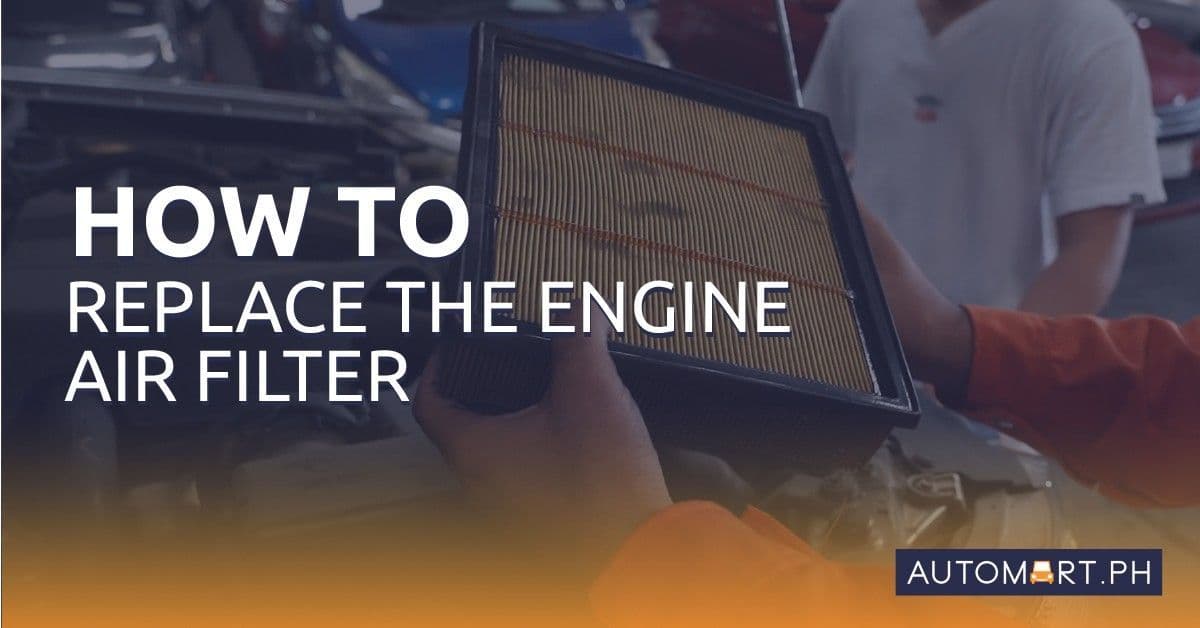
How to Change the Engine Air Filter
Updated on January 08 2026
Changing the engine air filter in your car does not require a degree in automotive engineering. Even if you don’t know a lot about cars or about anything under the hood, you can change the air filter in a few easy steps.
Is the engine air filter different from a cabin filter?
Yes. Your vehicle uses many filters to maintain a smoother operation, but the engine air filter is different from a cabin filter.

Typically found inside your car (behind the glove box), the cabin air filter is for purifying the air inside your car’s interior. On the other hand, the engine air filter is under the hood and ensures the motor is sucking clean air for combustion.
However, changing the cabin filter and engine air filter involves similar steps. Most of the time, you can do it without using hand tools!
How to Change the Engine Air Filter
Difficulty Rating: Easy
Materials Needed:
A. New air filter
B. Philips or flat-head screwdriver (optional)
Step 1: Park your car and pop open the hood.
You can find the engine air filter inside the airbox under the hood. Park your car, engage the parking brake, and open the hood.

The airbox is a sizable black plastic box that sits on top or to the side of the engine. The airbox connects to the engine intake via a rubberized or plastic air hose.
Step 2: Open the airbox to remove the old air filter.
Open the airbox by unlocking the clips, clamps, or wing nuts. After opening, you can pull out the dirty air filter from the box.

Depending on the type of vehicle, the engine air filter can come in many shapes and sizes. Air filters can be round, conical, square, or even oval-shaped. The shape of the airbox is a telltale sign of the air filter’s shape and size.
Step 3: Insert the new air filter inside the airbox.
Grab the new air filter and place it inside the airbox. Make sure the rubber rim of the air filter is facing upwards.

Make sure the new filter is seated correctly before closing the airbox.
Step 4: Close the airbox.
Close the airbox by fastening the clips or clamps. For this matter, a leaking airbox (or air intake system) may cause idling and acceleration problems. Double-check the fasteners to be sure.
Step 5: Close the hood.
After replacing the air filter, close the hood and give yourself a pat on the back for a job well done.
What are the signs of a dirty air filter?
There are two main signs of a dirty air filter.
1. Decrease in fuel economy.
The engine in your car is like a huge air pump. It sucks in copious amounts of air to initiate the combustion process. If the air filter is clogged or dirty, the engine will work harder and will compensate for the lack of air by consuming more fuel.

If you notice your car is burning more fuel than usual, inspect the air filter immediately.
2. Ignition problems.
If the engine compensates for the lack of air by burning more gas, the spark plugs will get dirty and cause ignition problems like hard starting, faulty idling, sluggish acceleration, and engine stalling.

When should I change the engine air filter?
It depends on the make and model of your vehicle. Generally speaking, we recommend changing the air filter once a year or every 20,000 kilometers. If your car has a washable air filter, clean it every six months to maintain peak combustion efficiency. It’s also a good idea to replace the air filter more frequently if you drive primarily in city streets or dusty roads.